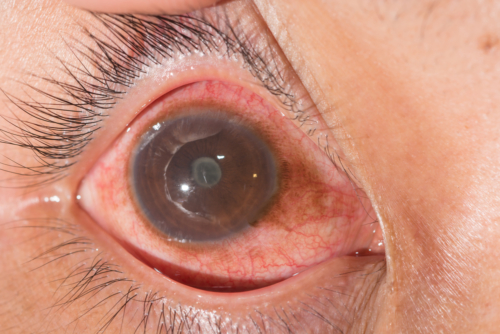What is Uveitis
Uveitis is a broad term describing a group of inflammatory diseases of the eye that involves swelling and destroys eye tissues. It can be painful, the eye or eyes can be red, and swollen with cloudy vision.
There are three types of uveitis; anterior, intermediate, and posterior uveitis, depending on which part of the uvea is affected. The uvea is the pigmented, middle layer of the eye, lying beneath the sclera and cornea, and comprising the iris, choroid, and ciliary body. Although uveitis typically affects the uvea, it may also affect the lens, retina, optic nerve, and vitreous, producing reduced vision or blindness.
Anterior uveitis: swelling of the uvea near the front of the eye. Anterior uveitis can begin suddenly and symptoms can last up to eight weeks. Some forms of anterior uveitis are ongoing, while others go away but keep coming back
Intermediate uveitis: swelling of the uvea in the middle of the eye with symptoms that can last for a few weeks to many years. This form can go through cycles of getting better, then getting worse. Intermediate uveitis can also be known as vitritis or pars planitis. Vitritis is an inflammation of the jelly-like part of the eye, the vitreous cavity. An inflammation of the pars plana is called pars planitis.
Posterior uveitis: Swelling of the uvea toward the back of the eye is called posterior uveitis. Symptoms can develop gradually and last for many years.
Pan-uveitis, a more severe case of uveitis, is an inflammation in all layers of the uvea.
What Causes Uveitis
The exact cause of uveitis is unclear, however, we do know that uveitis can be caused by diseases or other problems occurring in the eye or it may be part of an inflammatory disease affecting other parts of the body. Some infections or diseases that increase of the risk of uveitis happening include:
- shingles virus
- Lyme disease
- herpes simplex virus
- syphilis
- parasites such as toxoplasmosis
- inflammatory bowel disease (IBD)
- rheumatoid arthritis
- lupus
- histoplasmosis
- Kawasaki disease
- multiple sclerosis
- psoriasis
- reactive arthritis
- tuberculosis
Eye injury (bruises to the eye) and smoking can increase your risk of uveitis. An attack from the body’s own immune system (autoimmunity), infections or tumors occurring within the eye or in other parts of the body, and toxins that may penetrate the eye, can also increase your risk of acquiring uveitis.
Uveitis Symptoms
- Eye pain
- Floaters (dark, floating spots or specks in the vision)
- Blurred vision
- Redness of the eye (with or without pain)
- Sensitivity to light (photophobia)
Uveitis can develop suddenly and early detection could save your vision. If you experience any of the symptoms listed above, contact your ophthalmologist right away.







